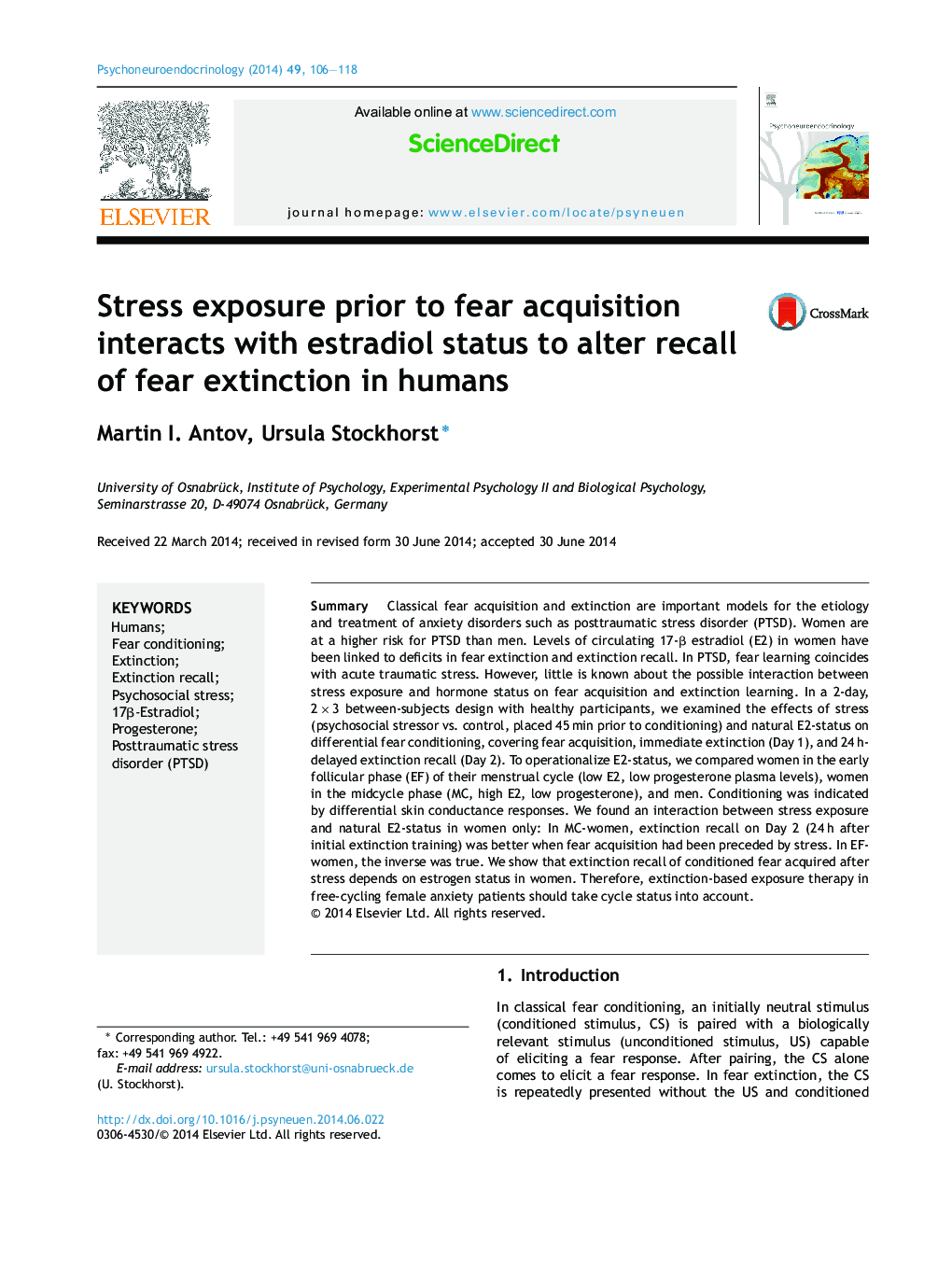| Article ID | Journal | Published Year | Pages | File Type |
|---|---|---|---|---|
| 6819521 | Psychoneuroendocrinology | 2014 | 13 Pages |
Abstract
Classical fear acquisition and extinction are important models for the etiology and treatment of anxiety disorders such as posttraumatic stress disorder (PTSD). Women are at a higher risk for PTSD than men. Levels of circulating 17-β estradiol (E2) in women have been linked to deficits in fear extinction and extinction recall. In PTSD, fear learning coincides with acute traumatic stress. However, little is known about the possible interaction between stress exposure and hormone status on fear acquisition and extinction learning. In a 2-day, 2 Ã 3 between-subjects design with healthy participants, we examined the effects of stress (psychosocial stressor vs. control, placed 45 min prior to conditioning) and natural E2-status on differential fear conditioning, covering fear acquisition, immediate extinction (Day 1), and 24 h-delayed extinction recall (Day 2). To operationalize E2-status, we compared women in the early follicular phase (EF) of their menstrual cycle (low E2, low progesterone plasma levels), women in the midcycle phase (MC, high E2, low progesterone), and men. Conditioning was indicated by differential skin conductance responses. We found an interaction between stress exposure and natural E2-status in women only: In MC-women, extinction recall on Day 2 (24 h after initial extinction training) was better when fear acquisition had been preceded by stress. In EF-women, the inverse was true. We show that extinction recall of conditioned fear acquired after stress depends on estrogen status in women. Therefore, extinction-based exposure therapy in free-cycling female anxiety patients should take cycle status into account.
Keywords
Related Topics
Life Sciences
Biochemistry, Genetics and Molecular Biology
Endocrinology
Authors
Martin I. Antov, Ursula Stockhorst,
